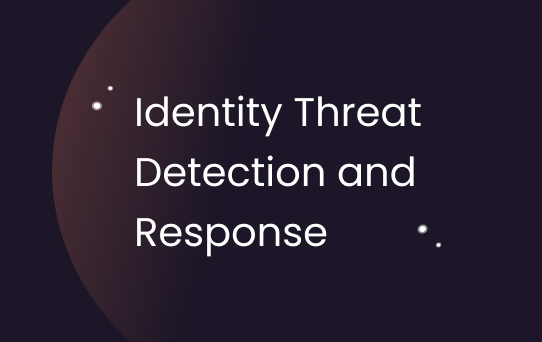What is ITDR?
Identity Threat Detection and Response (ITDR) is a cybersecurity practice that seeks to identify and respond to threats that target digital identities within an IT system. Such threats could include unauthorized access to a user account, identity theft, or malicious software trying to gain illegal access levels. ITDR's focus is to protect the integrity of digital identities in an organization, thus maintaining the confidentiality, integrity, and availability of an information system.
Why Identity Threat Detection and Response Exists?
ITDR exists to minimize the risk of identity-related threats which, due to the rise of digital transformation, have become more prevalent and sophisticated. By implementing ITDR, organizations can better detect potential identity threats and respond to them swiftly and effectively, thus mitigating the risk of data breaches, service disruptions, and financial losses. In an environment where cybercrime has become a pertinent issue, ITDR serves as a critical layer of cyber defense.
Who needs Identity Threat Detection and Response?
Every organization that maintains a digital presence and stores sensitive information online needs Identity Threat Detection and Response. This includes businesses of all sizes, as well as non-profit organizations and government agencies. Particularly, any organization that leverages Cloud infrastructure and Software as a Service (SaaS) applications needs ITDR, as these environments are potential target areas for identity-based cyber threats.
How Identity Threat Detection and Response is Used?
A myriad of methods and tools are used in ITDR. Threat detection often involves monitoring system activity, user behaviors, and network traffic to identify abnormal patterns that could indicate a threat. Upon detection, an effective response strategy is employed, which might involve disabling compromised user accounts, modifying access privileges, or beefing up defense measures such as firewalls and intrusion detection systems.
Identity Threat Detection and Response in Cloud Infrastructure and SaaS
In the context of Cloud Infrastructure and SaaS, ITDR becomes especially important due to the shared responsibility model. While the cloud provider ensures the security of the cloud, the client remains responsible for securing their data within the cloud. Here, ITDR strengthens IAM and permission management by closely monitoring and controlling who has access to what resources, ensuring least privilege access, and allowing for temporary access only when necessary. An advanced ITDR capability will keep pace with the dynamic nature of DevOps environments, providing continuous visibility and security to protect against identity-centric threats and enabling swift responses to any detected anomalies.








